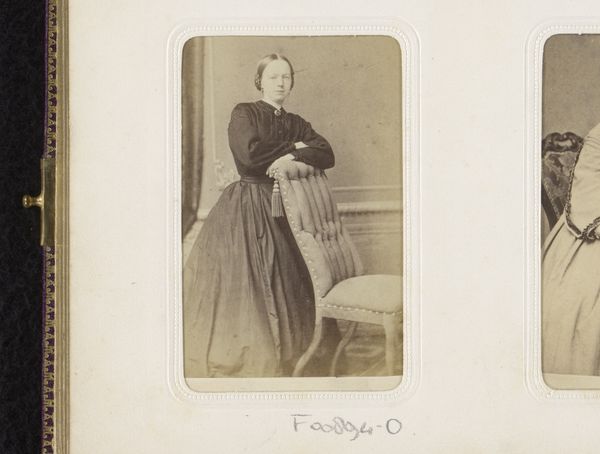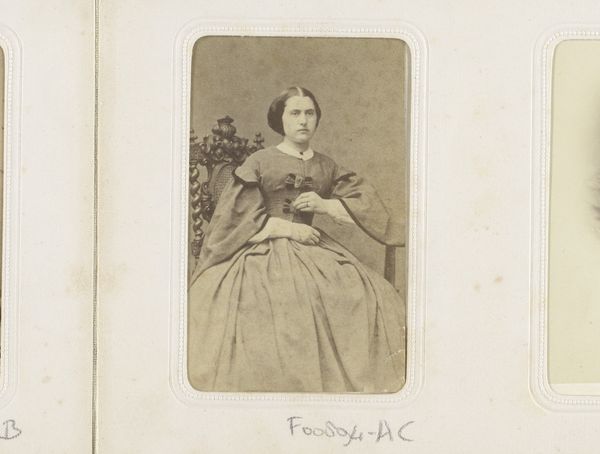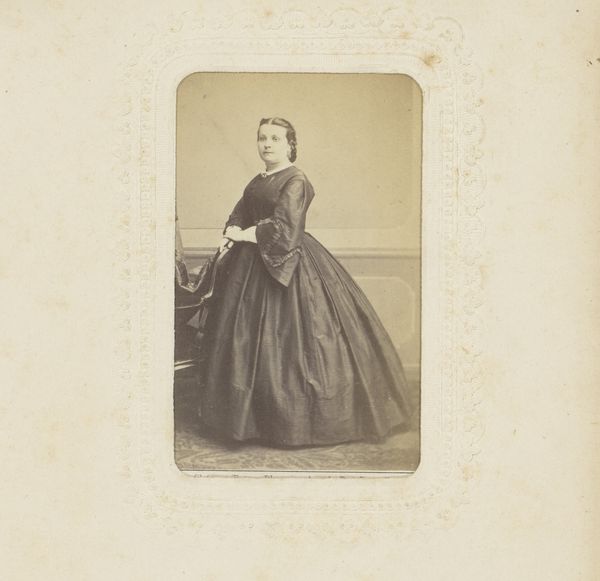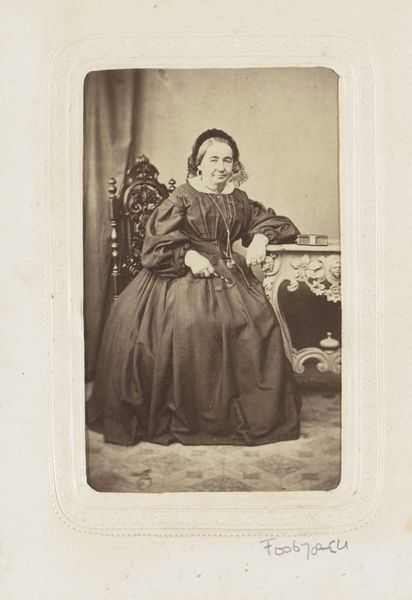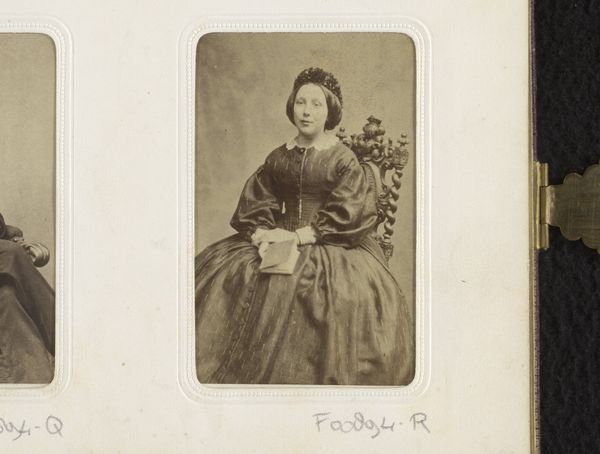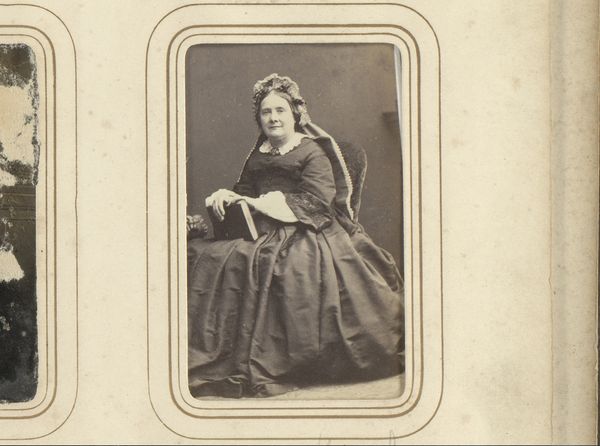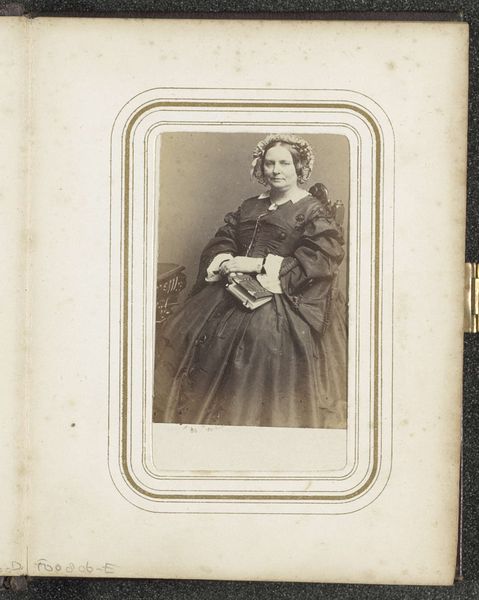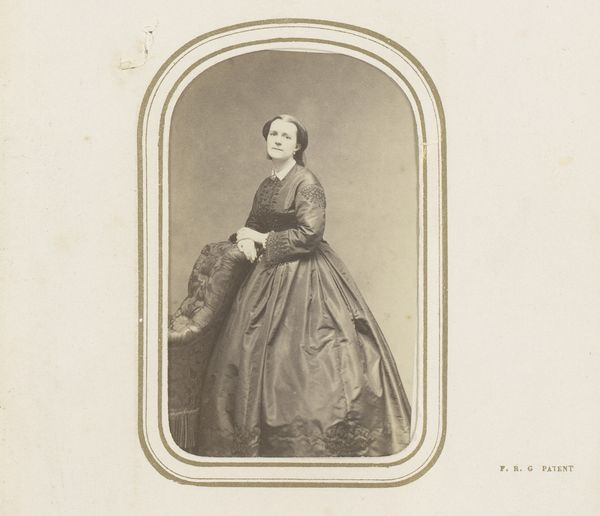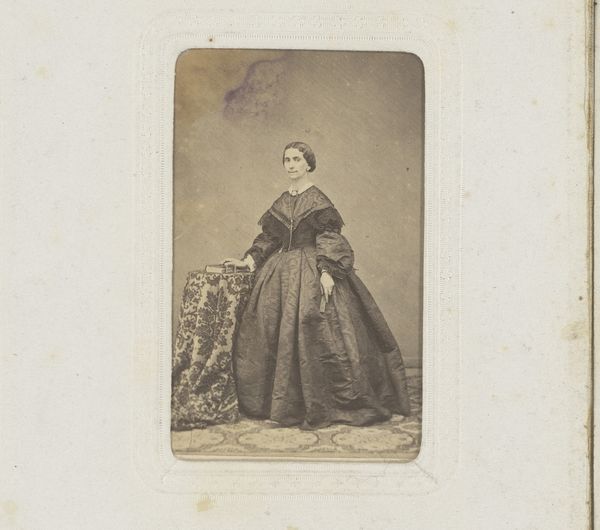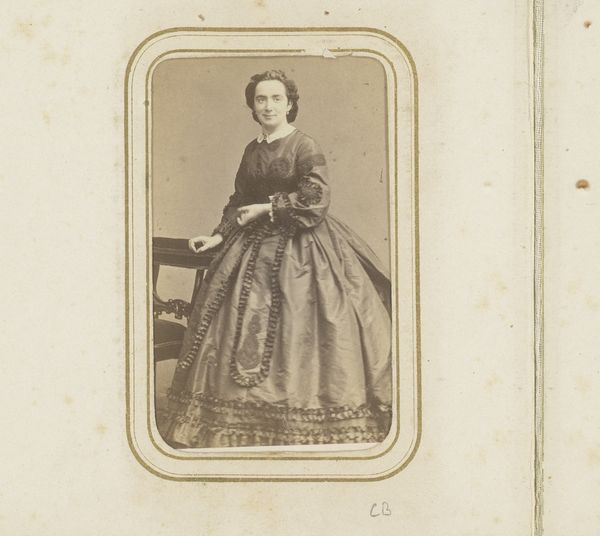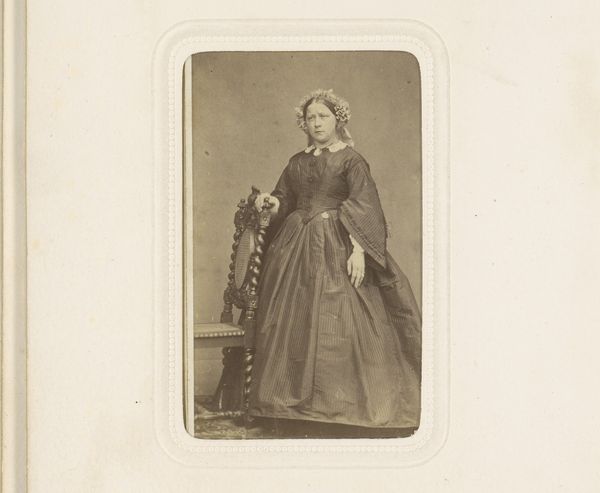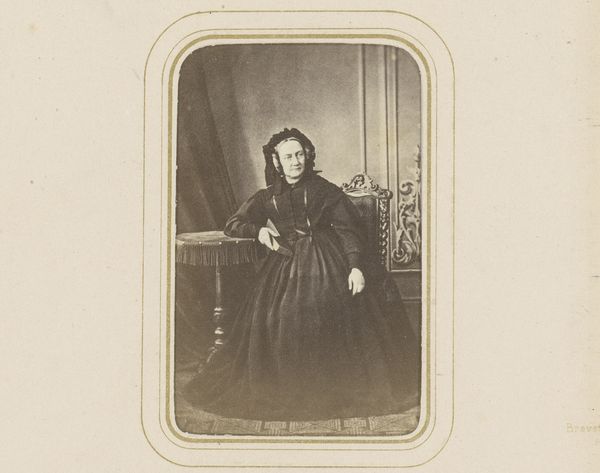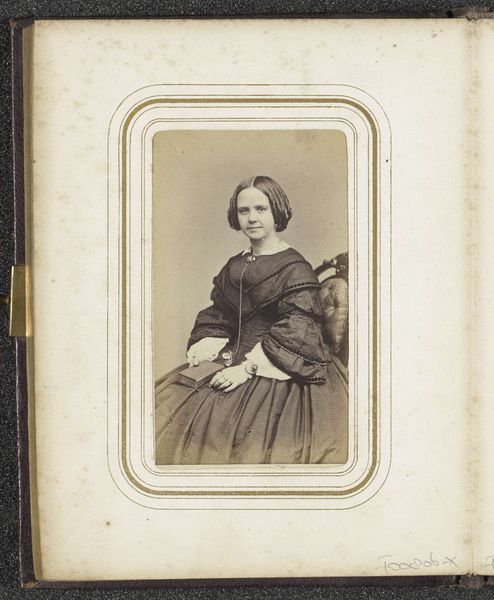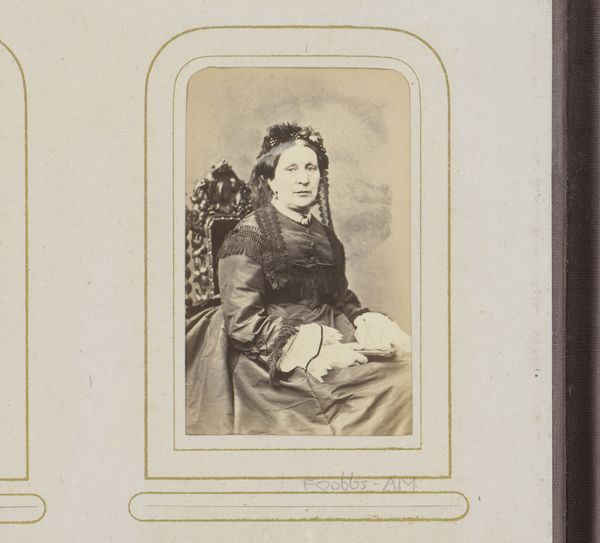
photography
portrait
photography
19th century
genre-painting
Dimensions: height 100 mm, width 59 mm
Copyright: Rijks Museum: Open Domain
Editor: This is "Portrait of a Seated Woman," a photograph from sometime between 1860 and 1880. What strikes me is how somber she looks, almost defiant. How do you read this portrait, especially considering the time it was made? Curator: It’s fascinating to consider how studio portraiture functioned then, especially for women. These images were carefully constructed. Consider the power dynamics inherent in the act of sitting for a portrait. The sitter, likely middle class, would have chosen to represent herself in a very particular way. Do you think she might be challenging the viewer through her expression and pose? What does that signify during this era of shifting social expectations for women? Editor: I see what you mean. It wasn’t a casual snapshot. But defiant? Maybe that's projecting too much. It's subtle, if there at all. Maybe it's just discomfort? I suppose this carefully crafted presentation served as a form of agency, but how much agency did she really have in the narrative that was created? Curator: Precisely. This tension between carefully curated performance and lived reality is exactly where the power lies, especially for those historically marginalized. What are the other possible implications? Is she conforming to the traditional idea of a lady or something different? Editor: So, in reading her "defiance," or even her "discomfort," we’re not necessarily seeing *her*, but an idea about women and class at the time. Maybe it isn't defiance at all but resilience? I didn’t consider this image speaking about the era’s social dynamics at all at first! Thanks! Curator: Exactly. Now imagine the woman’s gaze transcending time, staring back at us and interrogating *our* present. Portraits are mirrors reflecting our past and questioning our future.
Comments
No comments
Be the first to comment and join the conversation on the ultimate creative platform.
